
I’m Dreaming of Heirloom Tomatoes
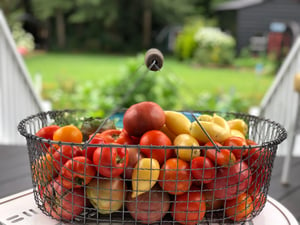
The new year is here and you have fresh gardening aspirations. Brie “The Plant Lady” returns to the Soil³ blog, armed with everything you need to know about planning your tomato crops for 2019.
Happy new year, everyone! I hope 2019 is off to a great start for you, despite the constant rain. At least we aren’t starting this year off in a drought! Have you been getting seed catalogs in the mail? I certainly have and I am already anticipating the summer by drooling over the tomato section in the Baker Creek Heirloom Seed catalog.
Growing Tomatoes is the Gateway to Home Gardening
How many of you can remember growing and tasting freshly picked homegrown tomatoes? Everyone loves the idea of harvesting fresh tomatoes to serve during summer meals – I mean nothing beats a homegrown BLT! And compared to the flavorless ‘maters being sold at grocery stores, homegrown tomatoes are a well-deserved treat. America’s most popular “fruit” is a summer favorite, but can pose some growing challenges especially for those of us living in the heat and humidity and of the South.
 Tomatoes originated in South America in high-altitude areas with moderate temperatures.
Tomatoes originated in South America in high-altitude areas with moderate temperatures.
To really understand how to grow a tomato you need to know their history. Tomatoes are native to high altitude regions of South America through the Andes mountain range. Here temperatures are moderate and humidity is low. The soil is relatively neutral in pH, and a thick layer of organic matter provides the ideal growing conditions. If this doesn’t sound like the environment that you are growing in, you are not alone!
Over thousands of years people have been breeding and making selections of tomatoes for bigger fruit, healthier plants, and higher yields from what was originally considered three different species. Over many centuries, these selections made their way around the world and now reign supreme as the most consumed “fruit” globally! Considering pizza is the most widely eaten food in the United States, Americans lead the way as the biggest consumers of tomatoes in the world.
Variety Selection
There are a ton of tomatoes to choose from, which makes the first step in growing very confusing. First, you have to decide on what size tomato – both plant size and fruit size. The plants and fruit are both distinguished in three categories.
For plants you have determinate, semi-determinate and indeterminate growing habits. Determinate varieties have a tighter form and are often called “bush tomatoes.” Generally these are referred to as “hybrids.” They will set flowers and fruit all at once which is a great characteristic if you are making large batches of sauce or canning the fruit. However, determinate varieties will have limited yields over the course of the summer. Semi-determinate varieties will continue to grow, flower, and fruit over the months of the warm season but do not grow as tall compared to indeterminate varieties that can often reach 15’ plus! Remember, tomatoes naturally grow as vines (think “vine ripened”) so while a determinate or patio variety fits into a traditional tomato cage perfectly, indeterminate varieties will need a much more robust stake to support the weight of the vines and the fruit. I highly recommend using cattle fence panels to construct sturdy and reusable frames to support the long-term growth habits of the indeterminate selections.
From a fruit standpoint, you have slicers, paste, and cherry/grape to choose from.
 Slicer tomatoes
Slicer tomatoes
Slicers have large, roundish fruit that can range in size, color, and flavor. They tend to be very juicy and have a limited storage capacity.
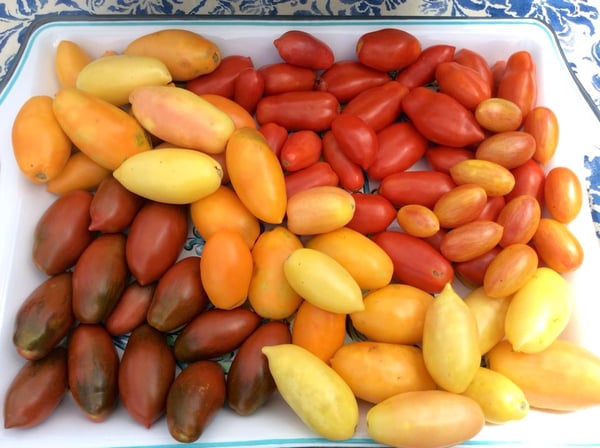 Paste variety tomatoes
Paste variety tomatoes
Paste varieties, like Roma, have long, slender fruit that typically grows in bunches. They have a meaty texture with less water, making them ideal candidates for cooking and canning.
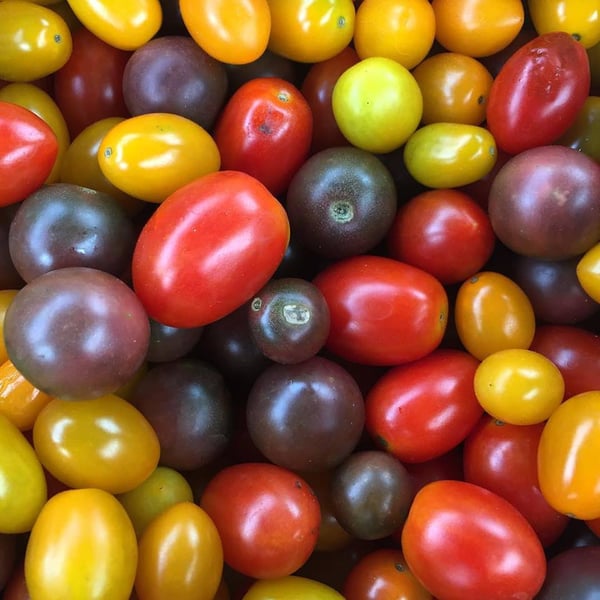 Cherry or grape tomatoes
Cherry or grape tomatoes
And finally, the cherry or grape varieties have small fruit and are the highest yielding. Cherry tomatoes are almost notorious for their long-lasting fruit set, and the plants tend to be very large and quite forgiving. They also will continue to flower and set fruit even when temperatures are over 95°F, one of the limiting factors for slicers and paste varieties when grown in very hot climates.
The Big Picture
Tomato varieties are also distinguished by broad categories related to breeding and genetic improvements. The terms hybrid, heirloom, and improved heirloom define the age and modification techniques made to a plant.
Hybrids, which are most often sold in retail outlets and grown by home gardeners, are reliable garden plants. They are primarily bush tomatoes with an evenly round red fruit: it’s the classic tomato. Varieties such as ‘Better Boy,’ ‘Big Boy,’ and ‘Early Girl’ have long dominated the hybrid market but lack flavor and creativity. While modern breeding modifications for increased yield and disease resistance are great improvements, flavor and nutrient density are overlooked. I am a tomato snob and have yet to find a worthy tasting hybrid, though I appreciate their capacity to grow and produce fruit.
 Heirloom tomatoes varieties are varieties introduced before 1930.
Heirloom tomatoes varieties are varieties introduced before 1930.
I became bored of growing from the options of my local retail outlets, which is how heirloom tomatoes captured my attention, thus starting my tomato-growing obsession. Heirlooms are varieties that were introduced before 1930 when only traditional breeding practices were known. This includes classics like ‘Mortgage Lifter’ — which literally paid for a West Virginia man’s mortgage during the Great Depression — and my favorite ‘Cream Sausage’ — which looks exactly like its name!
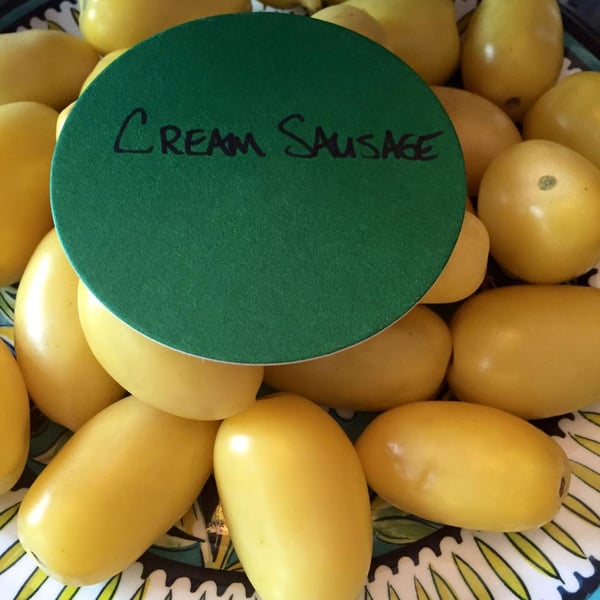 ‘Cream sausage’ tomatoes are a delicious heirloom variety.
‘Cream sausage’ tomatoes are a delicious heirloom variety.
I love heirloom tomatoes and have long been a customer of Baker Creek Heirloom Seeds because of the wide assortment of varieties they offer. In my opinion, all the best flavored tomatoes fit in this category, and every January I spend my nights dreaming about all the new-to-me varieties that I will grow through the summer as I order seed from the couch while watching Netflix.
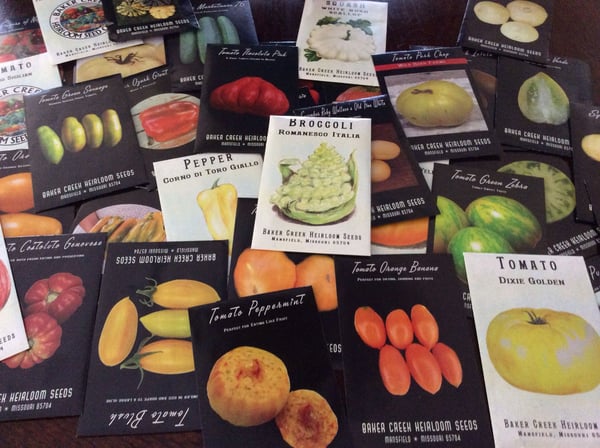 I get excited about this year’s crop once seed packets start to arrive.
I get excited about this year’s crop once seed packets start to arrive.
I’ll admit it’s easy to overbuy seed, so be prepared to stash it in the fridge until sowing time. Seed will stay fresh longer and retain a higher germination rate when stored in cool (not frozen), dark conditions. Always keep your seed dry in storage, using a plastic bag or container.
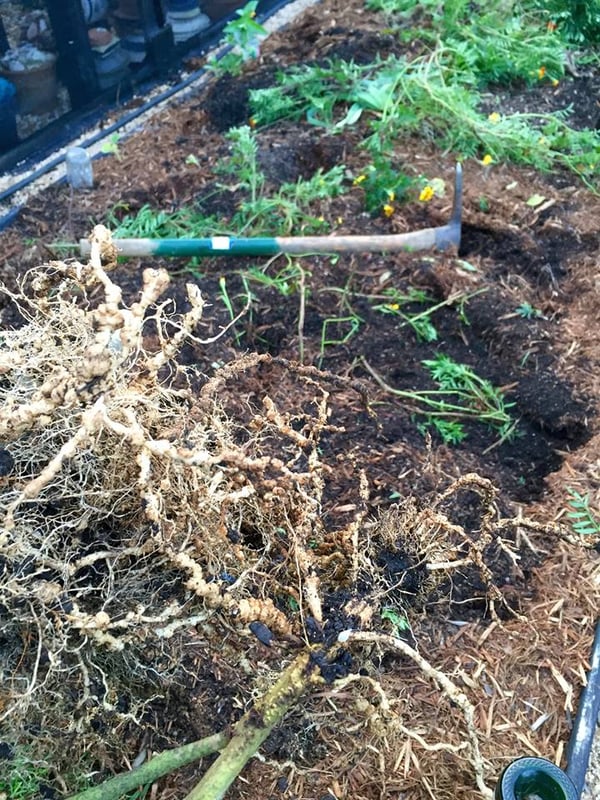 These root knot nematodes are detrimental to tomato success.
These root knot nematodes are detrimental to tomato success.
Of course when the Southern heat and humidity hits in June, many of the heirlooms limp along. This lack of vigor can be caused from root knot nematode infestations that result in a long, slow death. Tomatoes can suffer a sudden death caused from bacterial ralstonia or early, mid, or late blight. There is a lot that can go wrong with tomatoes in the South, so don’t let a failure hurt your feelings. Remember, it’s not you, it’s the climate!
Growing heirloom tomatoes can be difficult, but the flavor is unmatched, which is why breeders are working on developing “improved heirlooms.” These are plants that have been bred from old cultivars and are selected for improvements such as dwarf habits and disease resistance by employing traditional breeding methods.
 Craig LeHoullier and I share a mutual love for tomatoes and writing.
Craig LeHoullier and I share a mutual love for tomatoes and writing.
Raleigh tomato man Craig LeHoullier, author of my favorite tomato book, Epic Tomatoes, has been breeding to transform leggy indeterminate heirlooms with great flavor into plants suitable for patio pots. Advances in breeding from across the US are helping home gardeners have better success. Breeder Brad Gates has introduced many delicious, easy-to-grow improved heirlooms including my favorite cherry type, ‘Blueberries.’
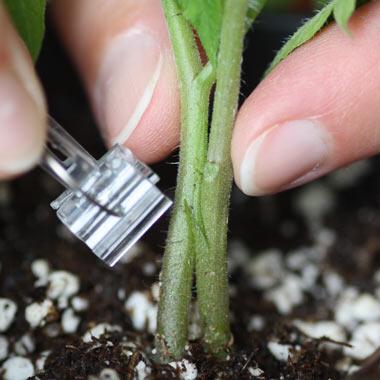 Grafting tomatoes requires specialized skills and knowledge.
Grafting tomatoes requires specialized skills and knowledge.
Another option for growing heirloom varieties is having them grafted onto disease-resistant rootstock. The grafting and after-care process isn’t easy, which is why growers like Banner Greenhouses are now offering grafted heirlooms ready for home gardeners to plant. These grafted plants have the original flavor with the added bonus of modern breeding - it’s literally the best of both worlds! If you haven’t seen grafted heirloom at your local garden center - ASK FOR THEM! This is my choice way to successfully grow in the ground.
Creative and Successful Ways to Grow Tomatoes
You have a lot of options on how to grow your tomatoes, but starting with healthy soil is hands down the most important thing. Tomatoes are extremely sensitive to disease, drought, and over saturation – they truly are the biggest drama queens! This is why growing in Soil³ is so critical. Since I started using Soil3 compost as the exclusive media for my tomatoes, the yields have increased and the disease problems have decreased significantly. Though I’ll never totally be able to overcome the issues with my native soil, layering Soil3 compost has helped significantly. Both my in-ground crops and containerized plants are grown in 100% Soil3 to ensure a successful season.
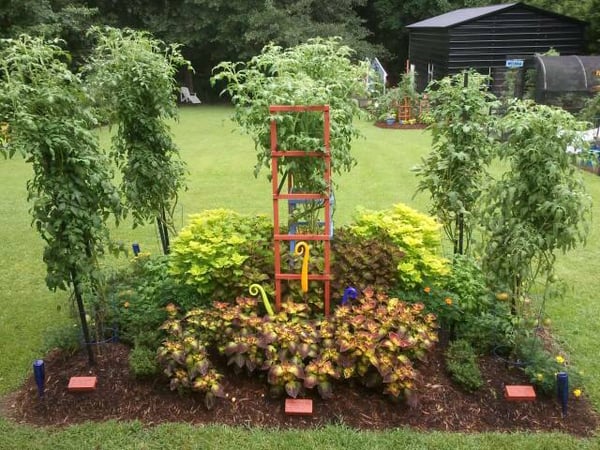 This patch holds several heirloom varieties planted in Soil³ compost.
This patch holds several heirloom varieties planted in Soil³ compost.
You can plant your tomatoes the traditional way, by growing them in the ground, either within your landscape or in a raised bed. Keep in mind that you will need to move your tomatoes into different areas each year to reduce disease pressure. I find that in-ground tomatoes also grow larger. Be prepared to stake them! I don’t waste my time with tomato cages anymore and exclusively use cattle fence to keep my vines from rambling on the ground. These sturdy wire panels can be cut to size and are easy to find at Tractor Supply Company.
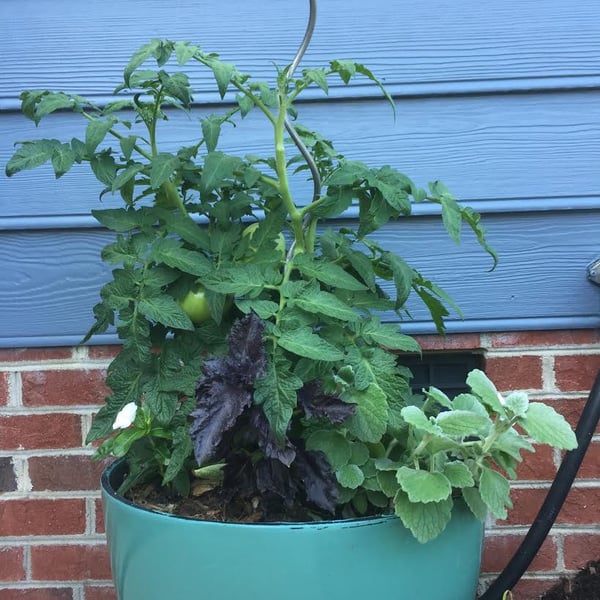 A dwarf heirloom variety is perfect for container gardening.
A dwarf heirloom variety is perfect for container gardening.
Tomatoes are an excellent candidate for container culture, which will help you avoid the many soil-borne diseases that may be lurking in your ground. Be sure to locate your pots near a water source and provide ample staking. Always grow in a well-drained media, like Soil3 compost, and supply ample fertilizer as nutrients will leach through your container with frequent irrigation. I also recommend growing in larger containers to help reduce the need for daily watering. Tomatoes can grow really large and will need plentiful room for their roots to develop. I have had a lot of success growing heirloom tomatoes in 7-gallon ornamental plastic containers. Anything smaller becomes cumbersome and the plants end up suffering mid-season.
Last year I had one of the greatest “discoveries” in my tomato growing experience – Rootmaker pots! I was familiar with this brand from my experience as a professional tree and shrub grower but had never used them in my home garden. The results were astounding! Because these containers allow for sharp drainage and airflow at the root zone, the tomatoes thrived like I had never seen. I lined these pots along an arch made from cattle fence and within a few weeks the vines covered the structure. We harvested hundreds of pounds of fruit all summer long. Even after two hurricanes, the tomatoes grown in Soil3 compost in 3-gallon Rootmaker pots were happily growing and setting fruit. This year I plan to have at least 50 Rootmaker pots throughout my garden to ensure that I have a bountiful harvest!
Because I live in a former tobacco field growing tomatoes has been increasingly challenging. I recall my first season in my current garden, the summer of 2011. All of my tomatoes thrived and looked beautiful. It was a big self-esteem boost! However, in each passing year the challenges have increased. As a result I have adapted my growing strategies and the variety selections.
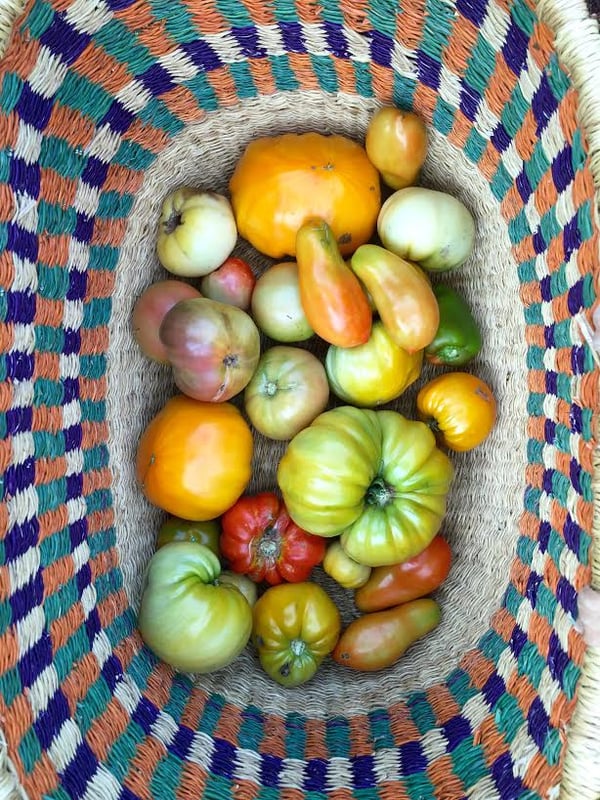
Here are my top varieties and how I grow them to have successful harvests:
- ‘Cream Sausage’ grafted, grown in ground
- ‘Peche’ grown from seed, in hydroponic bucket
- ‘Blueberries’ grown from seed, in Rootmaker container
- ‘Berkley Tie Dye’ grafted, grown in ground
- ‘Cherokee Purple’ grown from seed, in Rootmaker container
- ‘Kellogg’s Breakfast’ grafted, grown in ground
- ‘Patio’ from Gardenuity, grown in fabric bag
- ‘San Marzano’ grown from seed, in hydroponic bucket
- ‘Orange Banana’ grown from seed, in fabric bag
- ‘Purple Calabash’ grown from seed ,in a hydroponic bucket
Cultural Requirements
Tomatoes are a warm season crop and grow best outside in the Southeast after the last frost date until the days get short and the temperatures drop in mid fall (October-November). It is hard to not jump the gun in early spring, but remember that tomatoes are very sensitive to frost and prefer warm soil temperatures for root establishment. If you can’t control yourself in early spring, plant them into larger containers to allow them to grow before transplanting into their final destination. This will allow you to move them if a late frost is predicted while getting them better established for the long, hot growing season ahead.
Always mulch your tomatoes as soon as you plant them – in the ground or in a container! Soil-borne diseases are to blame for the majority of tomato deaths. Have you ever noticed how tomatoes always get sick leaves from the bottom up? A thin layer of triple shred hardwood mulch will keep the soil from splashing up onto the lower leaves, thus reducing soil-borne diseases. This practice will also help keep your soil temperatures cooler and reduce weed pressure.
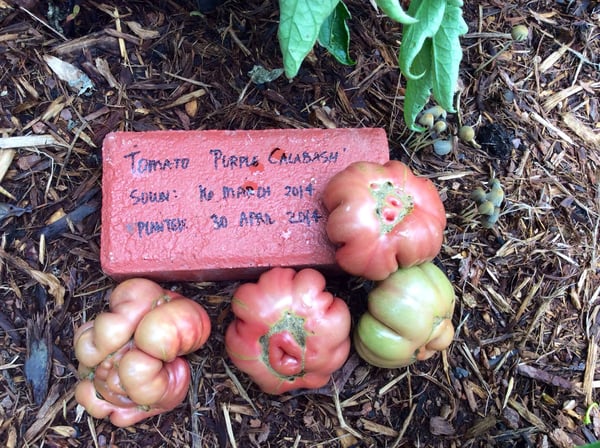 These ‘Purple Calabash’ tomatoes required plenty of water to reach their full potential and unique shape.
These ‘Purple Calabash’ tomatoes required plenty of water to reach their full potential and unique shape.
The key to growing tomatoes well is even moisture – for the entire growing season but particularly during fruit set. This is yet another reason to grow your tomatoes in Soil3 compost. Remember that tomatoes are 92% water and are very sensitive to drought. Allowing plants to get too soggy or dry out will inhibit the plants’ ability to absorb all the necessary nutrients, often leading to “blossom end rot.” This condition is often associated with a calcium deficiency, but it is actually an issue caused by temperature and water fluctuation that makes the plant unable to absorb calcium. This manifests itself as a dark, rotten spot on the bottom of the tomato. It is best to remove the fruit to allow the plant to regenerate. Adding a drip irrigation system with a timer will make growing tomatoes much easier and help reduce fruit splitting, which is caused from sudden excessive moisture – often brought on by our summer rain storms.
Fertilizer is another critical component for successful growing that can be confusing. If you are growing tomatoes in the ground and are an organic grower, Tomato Tone from the Espoma line of powder fertilizer is a great option. This is an easy-to-use, well-balanced formulation that I apply upon planting and again in mid-July. Container-grown tomatoes will need to be fertilized more frequently to compensate for nutrient leach through the soil profile. I use 10-15-18 from Fertilome mixed into the top 3” of the potting soil. This ensures that fertilizer will be made available to the root zone over a period of time. I also fertilize with water soluble fish emulsion once a month, drenching the foliage and root zone to maximize nutrient uptake.
Harvesting, Processing, and Preserving Your Harvest
The trophy for your effort is getting to enjoy the literal fruits of your labor. I always say the first and last tomatoes of the season are the best – everything that comes in the middle can feel a bit overwhelming. Depending on how many tomatoes you plant, eating all the fruit fresh is a treat! Two of my favorite ways to enjoy the taste of summer are tomatoes sliced with salt or chopped it into fresh salsa. But if you are an ambitious planter, like me, you may need a plan to stash them away for eating throughout the year.
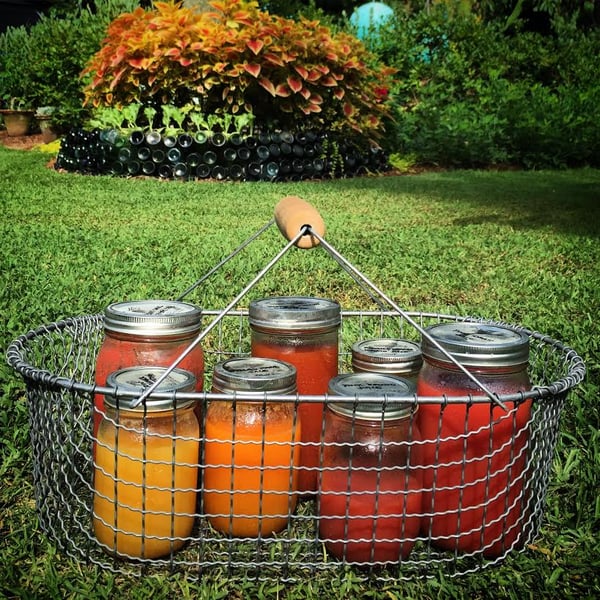 Preserving tomato juice is an end-of-summer necessity.
Preserving tomato juice is an end-of-summer necessity.
I learned this lesson about 5 years ago when, in late July, I was faced with hundreds of pounds of tomatoes covering every surface in my kitchen and dining room. I thought back to watching my grandmother spend entire days cooking tomatoes down into sauce to be canned and realized, I DO NOT HAVE TIME FOR THAT! So, out of necessity, I started experimenting with how I could process and preserve this abundant harvest without spending hours at my stove.
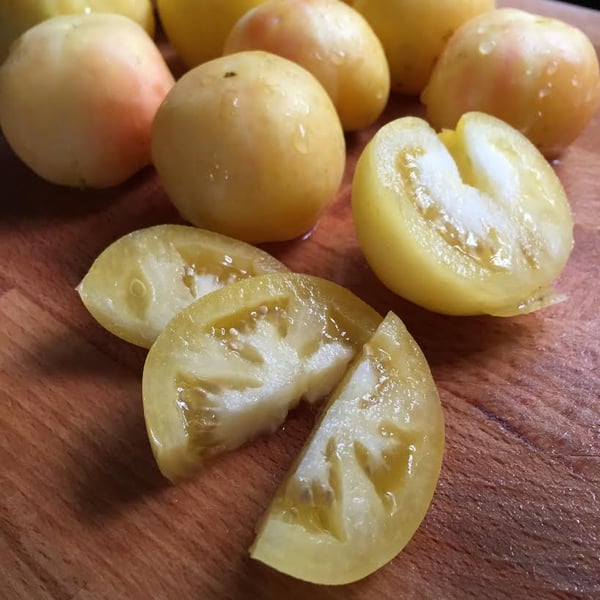 Quartered and cored ‘peche’ tomatoes are ready for preservation.
Quartered and cored ‘peche’ tomatoes are ready for preservation.
Start by washing and coring the tomatoes. Then, cut them in quarters and load them into a food processor. (I separate mine by color to ensure it doesn’t all turn brown.) DO NOT remove the skin and seed – no one should have time for that tedious work! Now pulse the raw tomatoes for about 30 seconds. What you now have is a tomato slurry.
 Break out the canning equipment for a quick water bath.
Break out the canning equipment for a quick water bath.
One of my first “aha” moments was realizing the reason it takes all day to cook tomatoes into sauce is because they are 94% water! So, by food processing the raw fruits I can easily separate the juice from the paste, thus reducing my cook time significantly! This is a simple process of squeezing the raw tomato paste between two fine strainers and collecting the juice in a bowl. The juice extracted is a delicious base for bloody marys and can easily be canned in a 15-minute stovetop water bath.
*Always consult with proper canning instructions – I love the classic Ball Complete Book for Home Preserving.
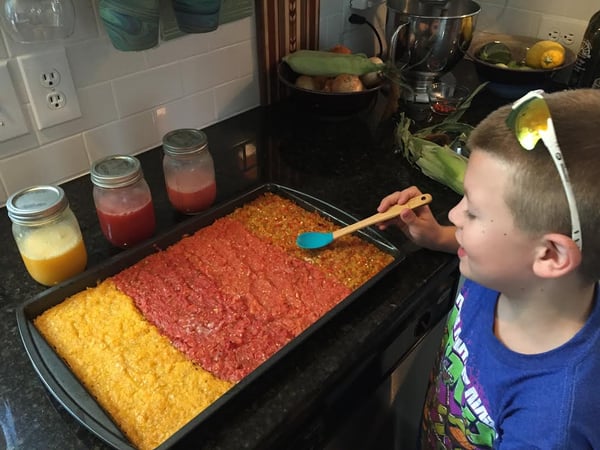 Separating tomatoes by color before juicing and cooking results in a nice ombré color scheme rather than a batch of brown paste.
Separating tomatoes by color before juicing and cooking results in a nice ombré color scheme rather than a batch of brown paste.
Now place the remaining paste into a roasting pan and cook for 45-60 minutes at 400°F. This roasted paste can be transformed into tomato soup, marinara, pizza sauce, spaghetti sauce, ketchup, salsa – basically anything that requires cooked tomatoes. You have probably noticed that I have not added anything – no salt, sugar, oil. This is also from experience. It is easier to add flavoring when you are preparing the meal, rather than in the large batch processing.
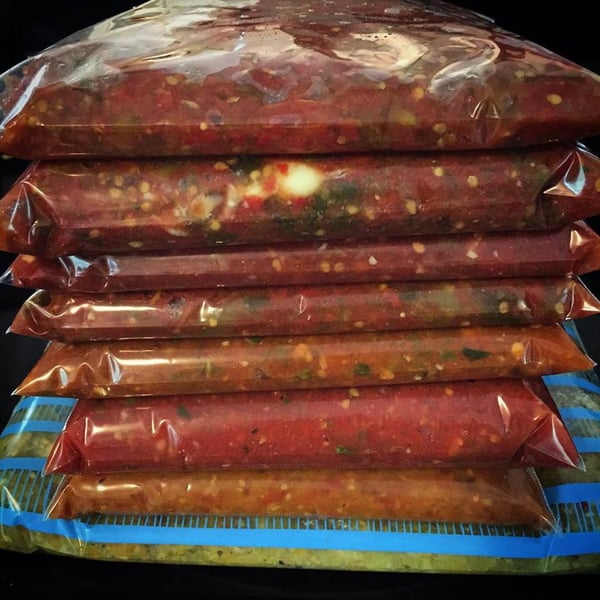 Quart-sized bags full of paste are ideal for adding to your recipes throughout the year.
Quart-sized bags full of paste are ideal for adding to your recipes throughout the year.
Once the paste has cooled, fill up quart-sized freezer bags, lay flat, and stash in freezer. This has proven to be the easiest, most versatile way to preserve the tomatoes and use them long-term.
Celebrate Your Efforts
Growing tomatoes requires time, energy and attention, so be sure to celebrate your harvests and share them with loved ones. We love to serve homegrown bloody marys at our annual summer celebration, The Tomato Tasting! I like to set up a make-your-own station so guests can enjoy a custom drink. Serve in a Ball jar over ice with a lid for regular shaking.
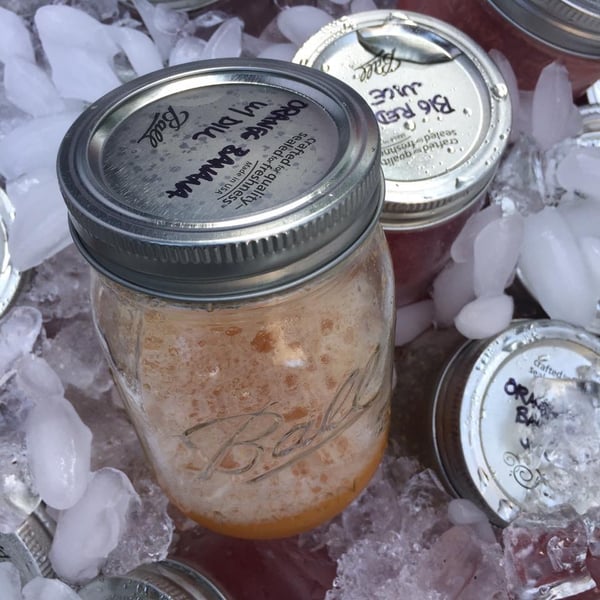 Quart jars are the perfect media for holding your homemade bloody mary.
Quart jars are the perfect media for holding your homemade bloody mary.
Ingredients
- 1/2 quart fresh tomato juice
- 1 tablespoon dill pickle juice
- 1 tablespoon grated fresh horseradish
- 1 tablespoon Worcestershire sauce
- 1 tablespoon hot sauce
- 1 tablespoon aged balsamic vinegar
- Dash of freshly ground pepper
- 1 shot of vodka or gin for added spirit
- An olive, jalapeño, lime or wedge of cheese for garnish
Preparation
- Fill a quart jar ½ way with tomato juice.
- Add dill pickle juice, Worcestershire sauce, hot sauce, horseradish and balsamic vinegar to taste.
- Add a shot of vodka or gin.
- Screw on lid and shake. Keep lid for regular shaking.
Happy planting (and celebrating!)
Brie
.jpg?width=400&name=Dreaming%20of%20Heirloom%20Tomatoes%20blog%20pinnable%20graphic%20(1).jpg)
Related Posts


Planting Your Landscape for Winter Color and Holiday Decorating
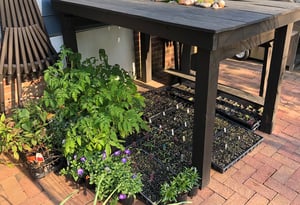
It's Spring - Time to make a realistic landscape plan

It's Fall! Here's What Brie is Planting to Keep Things Flourishing - Both Now and For the Spring
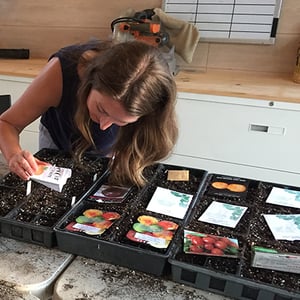
Plant Like a Pro with Brie's Veggie Garden Planting Calendar

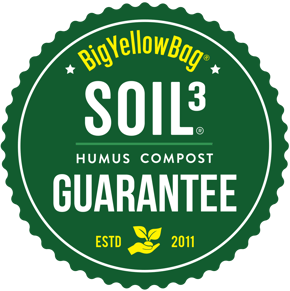
Did this help you out? Have any questions for clarity? Leave a comment below!